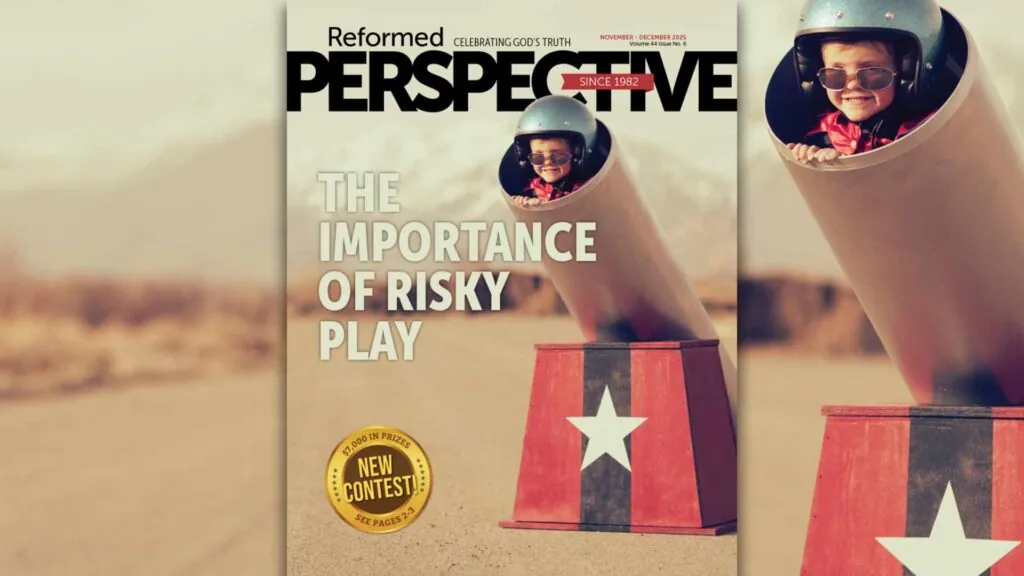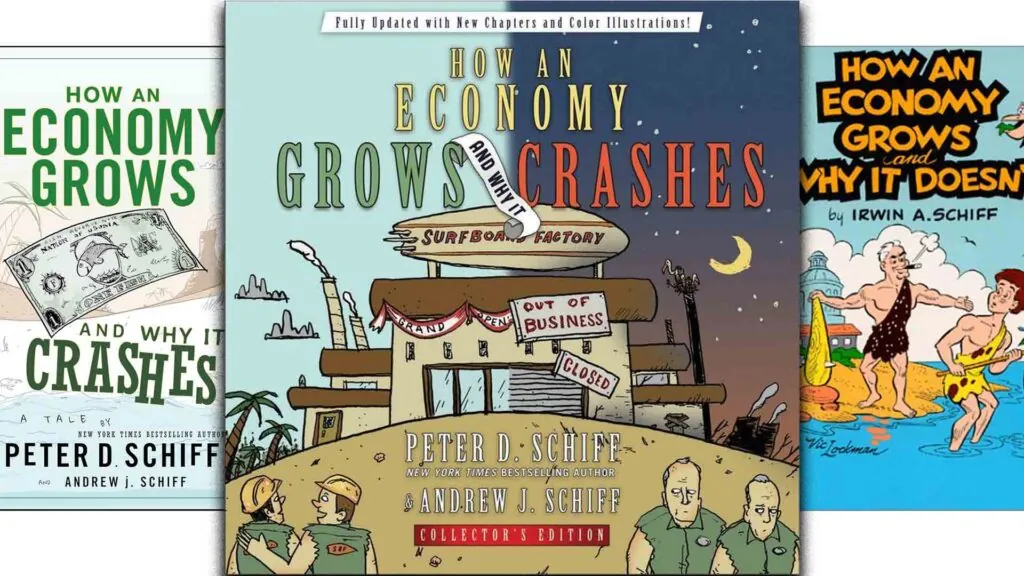Why we need to clarify Article 14 of the Belgic Confession
In the fourth century a big battle was fought over a one-letter difference. The Church professed that Christ was homoousios – “of the same substance” – as God the Father, while the Arians argued that Christ was homoiousios, or merely “of a similar substance.” The two Greek terms used differed by only a single iota (the Greek “i”) but what was at stake couldn’t have been bigger: the Arians said Christ was like God but was actually a creature.
Today we’re contending with an issue that seems quiet small: our battle is over a belly button. On the side are those that profess Adam had no belly button, because he had no mother and because he was never born. As the Belgic Confession Article 14 puts it,
…God created man of the dust from the ground…
On the other side or those who say Adam may well have had a belly button and a mom, and ancestors, and may have shared one of those ancestors with the chimpanzees.
So this belly button battle quickly shows itself to be about matters much more important. It comes down to whether Adam brought death into the world through the Fall into sin, or whether God used death – millions of years of creatures evolving up from the primordial slime – to bring about Adam. The issue here is every bit as big as Christ’s nature: it’s about the character of God.
That’s why Hamilton’s Providence Canadian Reformed Church has proposed amending Article 14 of the Belgic Confession to clarify that Adam has no ancestors. They propose that the Article begin with these two new lines:
We believe that God created the human race by making and forming Adam from dust (Gen. 2:7) and Eve from Adam’s side (Gen. 2:21-22). They were created as the first two humans and the biological ancestors of all other humans. There were no pre-Adamites, whether human or hominid.
Their addition would add about 40 words to the confession, and remove any doubt as to what should be believed.
But is the change needed? Is there really anyone in our church circles that’s confused about Adam’s origins? Yes, and yes. Not only is there confusion in our churches, this same confusion exists in other Reformed churches including the OPC.
Canadian Reformed confusion
One prominent member of the Canadian Reformed Churches, Jitse Van Der Meer, was asked how he could square man and chimpanzees having a common ancestor with what we confess in the beginning of Belgic Confession Article 14 about man being made from the dust. Prof. Van Der Meer answered:
I am not sure why you think there is something to square between Article 14 and the idea of a common ancestor for chimpanzees and humans, but let me make a guess. Some have taken Gen. 2:7 to mean that God acted like a potter. If you take that literally you might see a contradiction with the idea that chimpanzees and humans have a common ancestor. But other biblical scholars reject the literal “potter” interpretation because they see this as coming close to disrespect: Did God fashion the liver, the lungs of clay? My conclusion is that the text neither justifies nor excludes the possibility that humans and chimpanzees had a common ancestor for the obvious reason that it is not a scientific text.
Prof. Van Der Meer manages to take both Genesis 2 and Belgic Confession Article 14 and read them in such a way as to allow for the possibility that humans and chimpanzees had common ancestors. According to this perspective, Adam may have been crafted from the dust, but may still have had a belly button, a mom and dad, grandparents, and much, much more.
Confusion in the Christian Reformed churches
The Christian Reformed churches also hold to the Belgic Confession. But it hasn’t served as a sufficient safeguard against evolutionary inroads. Almost 25 years ago, in the CRC’s 1991 Statement on Origins they wrote in “Declaration F”:
The church declares, moreover, that the clear teaching of Scriptures and of our confessions on the uniqueness of human beings as image bearers of God rules out the espousal of all theorizing that posits the reality of evolutionary forebears of the human race.
That sounds good, right? But this was part of a minority report. The majority had recommended that there be no statements made about human evolution because, “much research remained to be done in that area.” So the majority of the committee, even back in 1991, didn’t want to go as far as to rule out ancestors for Adam. Synod did adopt Declaration F, but attached two notes which rendered the Declaration meaningless.
- Note 1: Of course, private research, theorizing, and discussions are not addressed by this declaration
- Note 2: Declaration F is not intended and may not be used to limit further investigation and discussion on the origin of humanity.
In other words, even as the 1991 Synod of the CRC took a stand against Adam having ancestors, they specifically allowed for their academics to talk about Adam having ancestors. What the right hand giveth the left taketh away!
In 2014, the CRC did away with Declaration F altogether. They still hold to Belgic Confession Article 14, but that is not being understood as an impediment to speculation about Adam having ancestors.
Confusion in the OPC
Closer to home, confusion about Adam’s origin also exists in the Orthodox Presbyterian Church. Our sister church was running into trouble way back in 1992 in a case that involved a Calvin College biology professor by the name of Terry Gray. Dr. William VanDoodewaard gives an account of Gray’s case in his book The Quest for the historical Adam:
Terry Gray…proposed that both the increasingly accepted hermeneutical alternatives to the literal tradition and what he viewed as the realities of the record of natural history should allow for the possibility that Adam and Eve were created through a process involving primate ancestors.
How did Gray address Genesis 2:7, where we are told “…the LORD God formed a man from the dust of the ground…”?
Disagreeing with John Murray’s literal reading…Gray argued that the “dust of the ground” was “a non-technical term” that simply referred to “the physical-chemical constituency of the human body” and that the verse did not address the process by which God formed man.
When complaints were first made about Gray’s stance, his session (the OPC term for consistory) “held that the charges were unwarranted.” Fortunately his Presbytery (similar to our Classis) ruled against Gray, and the 1994 OPC General Assembly also ruled against Gray.
So the OPC stood strong, right? Not so fast.
Gray was suspended from his office as a ruling elder, but as he explained in a blogpost titled “Being an Evolutionary Creationist in a Confessionally Reformed Church” he was restored in 1998 after he admitted “…I did not know how to hold my views about human evolution together with the uniqueness of Adam as taught in the Confessions and in Scripture.”
Gray found that what Scripture taught conflicted with his views about evolution. But that did not lead him to reject evolution. Instead he simply stopped trying to revolve the conflict, continuing to hold to evolution, but no longer suggesting as to how it could be fit in with Scripture.
That the OPC thought this an acceptable resolution to the issue underscores the need for clarity. If something is found to conflict with Scripture then it needs to be rejected, not sequestered! That’s what it means to live by God’s Word.
Gray eventually left the OPC, joined the CRC, and worked with others there to get Declaration F rescinded.
Conclusion
In the fourth century you can be sure that many wondered what all the fuss was being made over. Just one letter! But the fight was about the very identity of Christ – Who He is – so it wasn’t possible to compromise.
The same has to be true today. Some want to position this as only a minor matter. Maybe Adam had ancestors; maybe he didn’t. Can’t we all just get along?
But the issue of Adam’s origins impacts every aspect of what we know about God. If Adam had evolutionary origins then he came about through a process of death, disease, and dead ends. Then, rather than Adam bringing death into the world via the Fall, it was death that brought about Adam. If God created using the tooth-and-claw, survival-of-the-fittest, process of evolution which He then called “good” and “very good” that completely changes our understanding of what good is. It changes how we understand our good God.
What’s at stake here is our understanding of God’s. So no, we can’t all just get along. We need to help the confused and stop those who are causing the confusion. One very good way to do so would be to adopt Providence’s proposal to revise Belgic Confession Article 14.
This article first appeared in the June 2015 issue of Reformed Perspective.











